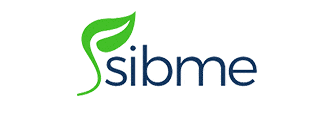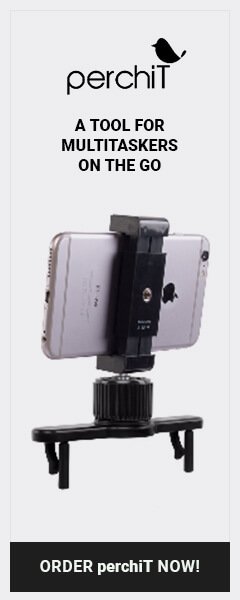
5 Reasons Why Classroom Observations Rarely Improve Teacher Practice
By: Dave Wakefield
This post is published in conjunction with Observation 2.0, a webinar featuring Dave Wakefield. The webinar and accompanying resources are available for free in the Sibme Learning Center.
Click here to watch the webinar on-demand
When I first started teaching literature to English Language Learners back in 2004 I was an idealistic recent college grad with a full head of hair and more energy than I’ll ever have again… Oh, how I miss those days molding young minds.
You know one thing I won’t miss? Classroom observations.
At my school, classroom observations happened around the same time every year. Usually, they were unannounced, but for the most part, you could anticipate the general time-frame when they would occur.
There was always more chatter in the faculty lounge during observation season. It was abuzz with disgruntled teachers complaining about their observation scores. The snarky chatter was contagious and it would bait even the most idealistic of rookie teachers into participating in the watercooler conversation.
And it went something like this:
“Mr. AP hasn’t taught in over a decade and only spent 3 years in the classroom. He couldn’t hack it so he went to the dark side. The guy knows nothing about my content let alone my teaching…”Below Expectations!” I just know he’s out to get me. He wants me out of this building for holding my students to high standards!”
Mr. Anonymous, “If you want Proficient or Exceeds Expectations on your observations you need to play the game with a “dog and pony show” and pass all your students like me.”
As an ACP teacher on probation, I bit my tongue and didn’t respond to their conversation, but the grizzly veteran had a point. Why was his professional practice being evaluated by someone who didn’t have the expertise to judge it, let alone decide the fate of his career?
I vividly remember my first experience with the painful PDAS appraisal process. I somehow “lucked out” and was assigned to my principal. While I was clueless about teaching and a terrible classroom manager, I vowed to never score a 1 or 2. Unsatisfactory and Below Expectations were simply unacceptable for this high achiever.
So, what does any overachiever do in this situation? They over-prepare.
I scripted out the most masterful lesson with “realia,” objects from real life used in classroom instruction by educators to improve students’ understanding of other cultures and real-life situations. I rehearsed the lesson repeatedly in front of the mirror until I built up enough muscle memory to execute it in my sleep. Shamelessly, I stored the realia and lesson in a brown paper bag in my classroom, so on a moment’s notice when my principal walked in, I could throw out the half-baked disaster I was teaching at the time and pivot to the “observation lesson.”
When that day finally arrived, I was prepared. I heard a walkie talkie go off outside my classroom door. Jose, a student in my class yelled, “She’s here!” as if I didn’t notice. She walked in with a clipboard and notepad in hand and sat down at my desk. Immediately, I shifted into observation mode. It was time to win that Oscar.
The lesson couldn’t have gone any better. It was a performance for the ages. My students were well-behaved, engaged in the lesson, and participated when needed. They were supporting actors in my well-orchestrated lesson. Maybe I missed my calling and should’ve gone to Hollywood after graduation.
During my post-observation conference, my principal told me that there was “real learning happening in my classroom” and that she had never observed a rookie teacher as good as me in her career. Her PDAS rubric checklist informed me that I was proficient and exceeded expectations in all categories. My ego was through the roof, and I believed I had achieved “Jaime Escalante” status in my first year of teaching.
Unfortunately, the classroom observation process I experienced that day has not changed much. In fact, Allyson Burnett, my colleague and veteran educator of 40+ years told me that the observation checklists used in the 1970s weren’t all that different than the observation instruments we use today.
Imagine that, over 40 years in the profession and the most innovative incremental improvement to the classroom observation process was the invention of the personal laptop computer for an appraiser to type their notes into a word processing application instead of handwriting them on a notepad. Many observers still scribe their notes with pen and paper today.
But the real problem with the observation process that I encountered as a teacher did not help me improve my practice. They may have even harmed my development as a young teacher and created unnecessary anxiety. Yet most schools and districts still spend hours of wasted time and energy doing them.
Click here to watch the webinar on-demand
There are 5 reasons why I think traditional teacher observations rarely improve teacher practices.
#1: They’re usually compliance-driven
For some reason, legislators, districts, and teacher’s unions have determined that the best way to evaluate a teacher’s performance is to observe his or her instruction within the context of a regimented, formulaic process. Appraisers, during their observations, follow a uniform protocol of look for’s and checkboxes on a framework or rubric and ultimately assign a subjective score to elements of the lesson. Within this process, the primary goal is to complete the protocol, not necessarily to improve teacher practice.
#2: They’re too infrequent to matter
On average, a teacher teaches 76,500 minutes in a school year. An administrator might observe an average of 40-90 minutes of instruction per teacher/school year which is .0012% of a teacher’s body of work. This is an incredibly small sample set that would make any scientist cringe. How can an appraiser draw a conclusion on such a small part of a teacher’s body of work? The answer is, they shouldn’t. Garbage in garbage out. This is problematic for good teachers. If they had a bad teaching day during their observation, they missed an opportunity to demonstrate the true reality of their classrooms.
#3: The focus is too broad
Too often during classroom observations, the observer is not laser-focused on the goals that should have been determined with the teacher in a pre-conference. Instead, the appraiser is looking broadly at a general smattering of all the things they see during the lesson. During the post-observation conference when a mountain of feedback is shared, it’s difficult for any teacher to absorb that information and make any improvements in their practice. When you get 50 random comments from one observation it is impossible to know what to do with that.
#4: The second an outsider steps foot in a teacher’s classroom, students AND teachers act differently
The Hawthorne effect, also referred to as the observer effect, tells us that when someone realizes they are being watched, their behavior changes and the observer is no longer getting an accurate representation of the individual they’re observing. Because I used my pre-planned model lesson during my observation, the principal did not get an accurate picture of where I was developmentally as a teacher.
# 5: Teachers are not on a level playing field during their post-observation conference
Observers in the traditional observation process typically script and document notes of teacher and student behaviors. Unfortunately, I haven’t met many administrators who are able to accurately recall and script everything that occurs during the lesson. And even if they could, they wouldn’t be able to!
Without objective evidence to reference together, it is difficult for an observer and teacher to have a meaningful conversation during the post-observation conference. The teacher is at a disadvantage because they are dependent on the subjective observation of an outsider’s perspective and what they managed to observe and document.
This is where conflict arises between teachers and administrators in a school. It can become a “He said, She said” scenario. Unless a teacher perceives this process as being accurate and fair, they will not be inclined to focus on growth or improvement. Judging a teacher’s practice will never be fair without a teacher and administrator being able to reference the same reality, not what is perceived to be reality through the lens of a biased observer.
Click here to watch the webinar on-demand
A Better Way: Teacher-Driven Observations
What if we flipped the teacher observation process, similar to the flipped classroom movement, and allowed teachers to be in control of their own classroom observations rather than their administrators? Instead, they could put their Best Foot Forward.
Each year, teachers, in partnership with their administrators, instructional coaches, and peers, could create their own professional learning goals that are connected to the state or district teaching standards. Teachers could use the smartphone in their pockets to record evidence of their practice and curate focused segments in relation to the goals they’ve set. First, they would watch the clips and reflect and annotate on how their instruction is impacting student learning in their classroom. Next, they could share a portfolio of video clips of their practice with annotations and related artifacts such as lesson plans, assignments, student work, and student assessments to their administrators to receive feedback. Administrators could more frequently watch these video clips of teaching practice during quieter times of the day instead of interrupting their teachers’ classrooms with high-stakes observations.
More importantly, this new process would enable teachers and administrators to have more meaningful asynchronous conversations about their professional practice that could happen anytime, anywhere from a smartphone, tablet, or laptop.
No more unannounced and arbitrary “gotcha observations” from administrators or teacher “dog and pony shows.” The video clips and related artifacts are all tied to the teacher’s improvement goals. Less is more. Shorter and more frequent observations and conversations that are focused.
One of the reasons I started Sibme was to improve the observation process, so teachers could receive more meaningful feedback from their instructional leaders and peers, and have better conversations about their practice in a safe and secure environment. Teacher quality is the number 1 in school factor when it comes to improving student outcomes. Our teachers need to be the best they can be for their students and it starts with teachers driving their own professional growth in partnership with their instructional leaders.
We will increase student learning across the country and globe through a radical transformation of how we help teachers continuously learn and grow on the job.
This is a cause worth fighting for.
Click here to watch the webinar on-demand

